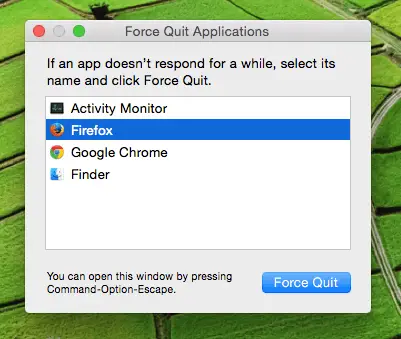

Undo the last action (such as rename file, copy file, etc.) Show Inspector (a single, live refreshing Info window) Move selected files to the Trash (called the Recycle Bin in Windows)Įmpty the Trash with warning (like emptying Recycle Bin in Windows)Įmpty the Trash with no warning (like emptying Recycle Bin in Windows)Ĭancel a drag-n-drop action while in the midst of dragging Immediately Delete a File (does not put file in Trash) Move a file instead of copying (Copies to the destination and removes it from the original disk.) Option Double-Click column divider (or the resize widget at the bottom of the column divider, depending on your setup)Ĭopy and Paste files Exactly (Keeps original ownership & permissions. Resize all columns to fit their longest file names (Column View) Resize one column to fit the longest file name (Column View)ĭouble-Click column divider (or the resize widget at the bottom of the column divider, depending on your setup) Select the next icon in Icon and List views Go into selected folder or open the selected file
FORCE QUIT CONTROL MAC MAC
Some apps may require more memory than your Mac can provide, resulting in this problem.Open Sidebar item in a new Tab or Window (depending on Finder Preferences) Quit apps you don’t use by selecting App Name > Quit App from the menu bar. Too many apps or programs running at the same time can slow down your Mac and result in this application memory problem. You can find out which process you need by opening Activity Monitor in Applications > Utilities and clicking on the application. This will force quit all processes associated with that specific application. For example, if the program is Safari then use killall “Safari”. Open Terminal and type ‘killall “application name”‘. The terminal command would not let any apps open on your Mac until you type in “exit” again so this could significantly affect your workflow if used improperly. This is a very powerful tool and you should be careful with it. The terminal command is the last resort for force quitting an app or process. If you wish to completely delete an app, drag its icon on top of the trash can in the dock.
FORCE QUIT CONTROL MAC WINDOWS
This will close any windows that are currently active for this app. To get rid of an open application, click and hold on its icon in the dock until it starts shaking then release your mouse button. Mac’s dock is a useful way to force quit an app or process.
FORCE QUIT CONTROL MAC HOW TO
How to Force Quit on Mac: Guide (April 2022) 4. In the top left of the window, you’ll see an octagon icon labelled with X. The activity monitor will display a list of activities currently running on your system.įind the application you want to force quit (or process) on the left sidebar. Open the Activity Monitor app on your desktop (or other location) by clicking it from Spotlight or opening Applications > Utilities > Activity Monitor.

How to force quit using an activity monitor: It’s been around since OS X Tiger and is still just as useful today. Force Quit using Activity MonitorĪn activity monitor is a tool that helps you manage your Mac. Press Control+ Command+ Esc on your Mac’s keyboard or hold down these three keys together at the same time.* Select the application that you want to force quit from the list on your screen and click “Force Quit”. How to Force Quit via Keyboard Shortcuts: To force quit an app simply click on the name and select Quit from the menu that pops up. The command “Command+Opt+Esc” will bring up a list of running apps. Some Mac users may be unaware of the keyboard shortcuts to force quit an app or process. How to Force Quit on Mac: Guide (April 2022) 2. If you are, hit the “Force Quit” button again. Select the app that is not responding and hit the “Force Quit” button.Īnother pop-up window appears, asking if you’re sure you want to force quit. You may see “(not responding)” next to the app causing problems.


 0 kommentar(er)
0 kommentar(er)
